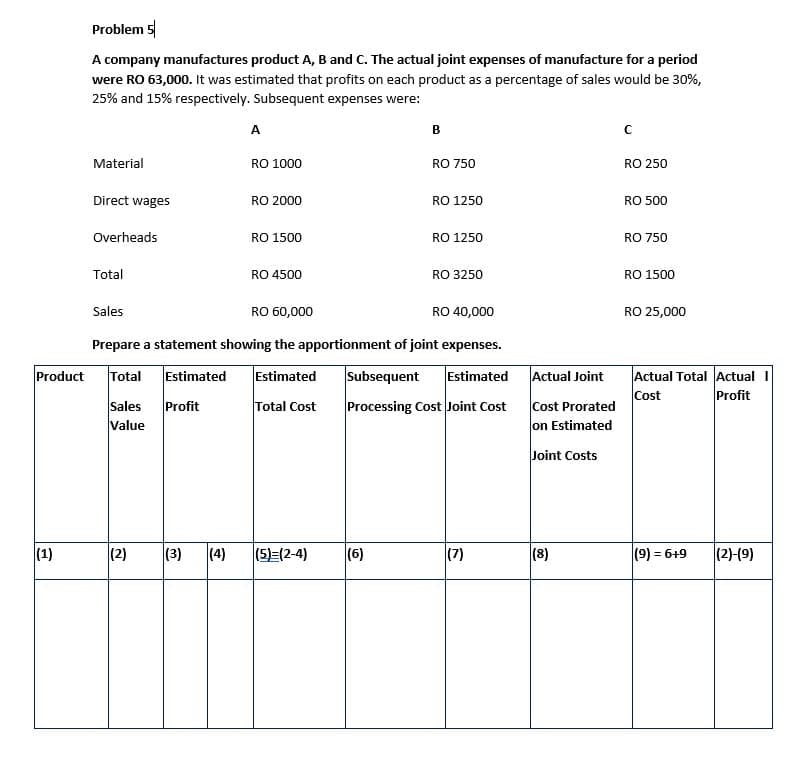Problem 5 A company manufactures product A, B and C. The actual joint expenses of manufacture for a period were RO 63,000. It was estimated that profits on each product as a percentage of sales would be 30%, 25% and 15% respectively. Subsequent expenses were: A в Material RO 1000 RO 750 RO 250 Direct wages RO 2000 RO 1250 RO 500 Overheads RO 1500 RO 1250 RO 750 Total RO 4500 RO 3250 RO 1500 Sales RO 60,000 RO 40,000 RO 25,000
Cost-Volume-Profit Analysis
Cost Volume Profit (CVP) analysis is a cost accounting method that analyses the effect of fluctuating cost and volume on the operating profit. Also known as break-even analysis, CVP determines the break-even point for varying volumes of sales and cost structures. This information helps the managers make economic decisions on a short-term basis. CVP analysis is based on many assumptions. Sales price, variable costs, and fixed costs per unit are assumed to be constant. The analysis also assumes that all units produced are sold and costs get impacted due to changes in activities. All costs incurred by the company like administrative, manufacturing, and selling costs are identified as either fixed or variable.
Marginal Costing
Marginal cost is defined as the change in the total cost which takes place when one additional unit of a product is manufactured. The marginal cost is influenced only by the variations which generally occur in the variable costs because the fixed costs remain the same irrespective of the output produced. The concept of marginal cost is used for product pricing when the customers want the lowest possible price for a certain number of orders. There is no accounting entry for marginal cost and it is only used by the management for taking effective decisions.

Step by step
Solved in 2 steps




